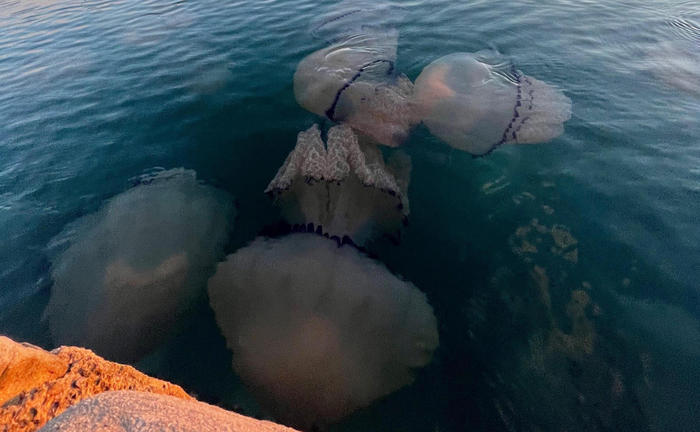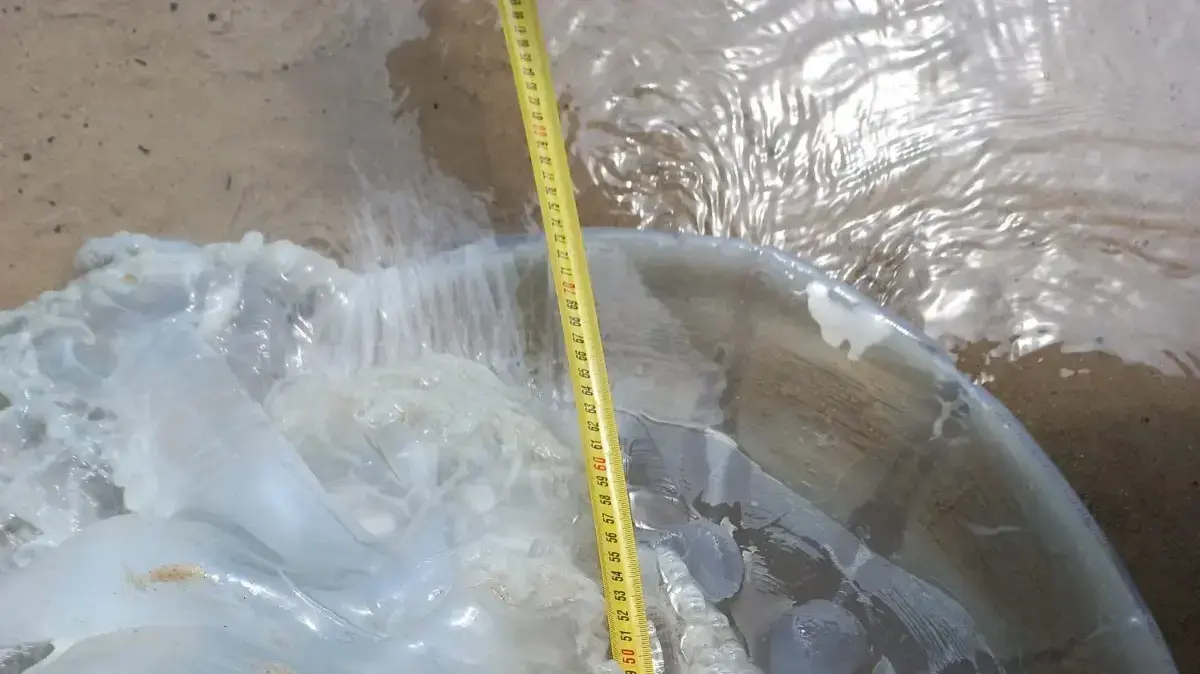Thousands of jellyfish have invaded the waters in front of Trieste, reaching more or less crowded areas, in front of Piazza Unità d'Italia, where canoeists and rowers often train, and where motor boats and sailboats pass.
The phenomenon occurs every year but this time the number seems to be really huge with entire stretches of sea completely covered by a carpet of jellyfish of the Rhizostoma pulmo species, that is to say white with a blue border.
Scientists call the phenomenon 'bloom' (and not because Joyce and her Molly Bloom lived in Trieste) and believe that there are many triggers.
One of these is undoubtedly due to overfishing, as stated by the researcher of the OGS (National Institute of Oceanography and Experimental Geophysics) Valentina Tirelli.
"Jellyfish and fish often eat the same prey, so by removing the fish we remove a predator and the jellyfish have more food available; more food means more ability to develop."
Tirelli is keen to clarify that the Rhizostoma pulmo, called lung of the sea or lady of the sea "is a not particularly dangerous jellyfish, present in the Gulf of Trieste almost all year round. It is therefore not a great novelty but it is exceptional that there are many specimens ".
Will they go away?
And when?
"We do not know, almost certainly yes because we have seen them arrive and then leave in other years, but we must also remember that jellyfish have been here for millions of years, they are among the oldest marine organisms on our planet. The first fossils of jellyfish. they date back to about 500 million years ago so they are in their environment - indicates the scientist - They are very resistant and very well adapted organisms, we will have to get used to living together ".
Meanwhile, in Grado (Gorizia), a seaside resort a few kilometers as the crow flies from Trieste, the presence of hundreds of beached and therefore dead jellyfish of the same species is reported.
They may have been pushed by the currents.






